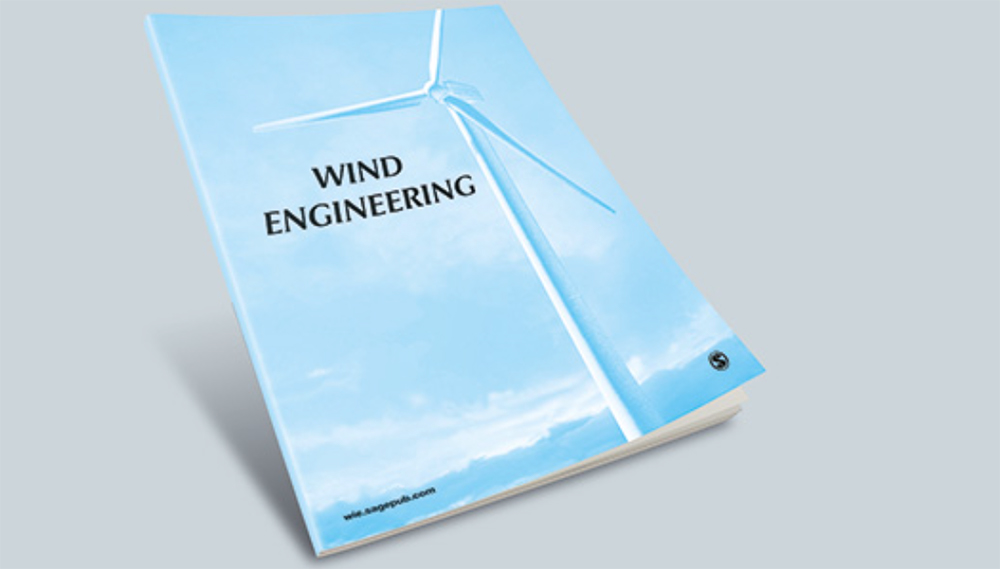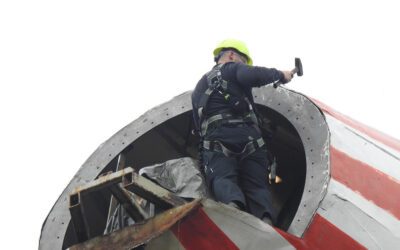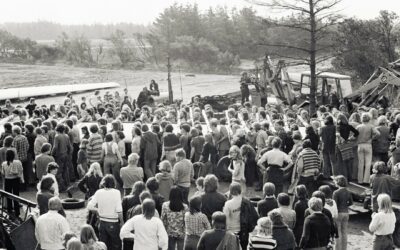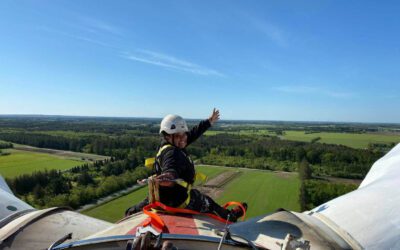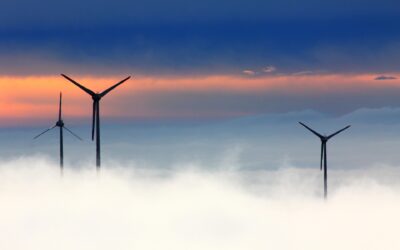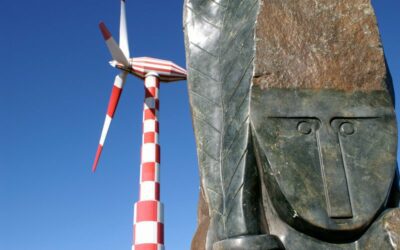The history of wind turbine development
Wind power experts Paul Gipe (of Wind-Works) and Erik Möllerström (senior lecturer at the University of Halmstad) have published an excellent review of the fascinating history of wind energy, from the early experimenters to the take-off of the commercial wind turbine industry. Tvindkraft’s part in this proud history is also detailed in the article, which is included in Volume 47 of the prestigious Wind Energy journal.
In the following we bring some excerpts:
”Following the first energy crises, Denmark was considering where, not whether, to build its first nuclear power plant. There were two small experimental reactors at Risø National Laboratory, the same Risø that later would become famous for its role testing “small” wind turbines. It was the turmoil around this pending decision that led to the famous Danish logo—Atomkraft? –Nej Tak! (Nuclear? No Thanks!) recognized worldwide.
The Danish state’s move toward nuclear led nuclear opponents and renewable energy activists to join together and take matters into their own hands. They decided to develop wind energy themselves. Thus, a renewable energy revolution was born.”
”Christian Riisager committed the first act of rebellion when in 1975 he connected his wind turbine to the grid. It was the first interconnected wind turbine in Denmark since Juul’s Gedser mill was installed for the regional utility two decades before. Riisager connected the turbine to the distribution system without authorization, and without utility or planning approval. He just did it—and ran his kilowatt-hour meter backwards.
Though the story may be apocryphal, it illustrates the rebellious attitude of Danish wind pioneers at the time. Decades later in the United States, rebellious renewable activists sometimes still found it necessary to connect their small wind turbines and rooftop solar panels to the grid without approval in what was called at the time a “guerilla” movement.”
“In the end, it was a group of students, their teachers, and the many volunteers at Tvind that created the initial blade design incorporating Hütter’s flange. But it took entrepreneurial wind activists and Denmark’s small manufacturers to commercialize the technology through standardized component parts that led progressively to the today’s booming worldwide wind industry. The world owes these Danish pioneers a debt of gratitude for the birth of modern wind energy and the spark that started the renewable revolution now sweeping the globe.
Denmark decided not to develop nuclear power in 1985, a year before the world first heard of Chernobyl. Sweden closed the first reactor at Barsebäck, the nuclear power station placed 20 km from the Danish capital to Denmark’s dismay, in 1999. They closed the second reactor in 2005. Meanwhile, Tvind’s turbine continues to spin, generating clean electricity.”
We do recommend reading the whole article, which appears in the journal ”Wind Engineering”, Volume 47 Issue 1, of February 2023.:
An overview of the history of wind turbine development: Part II–The 1970s onward
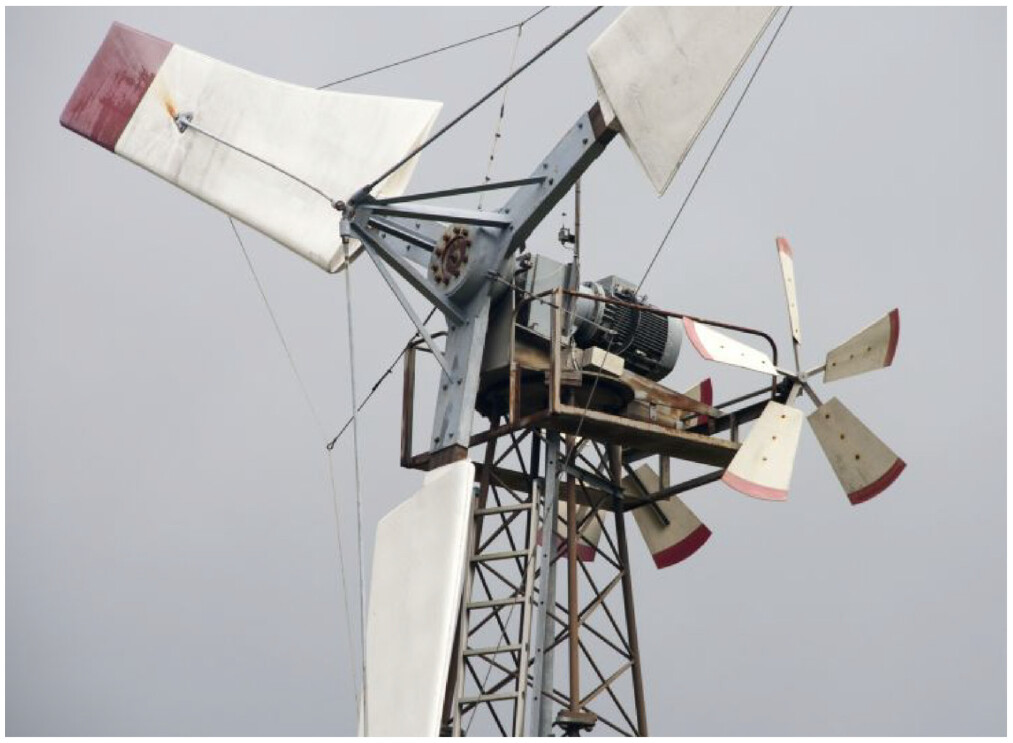
“Riisager built two 22 kW turbines in 1976 that he sold commercially. As a carpenter and as a Dane, Riisager built with what he knew best. He made his blades out of wood, and he emulated the mill at Gedser by bracing the rotor with struts and stays He used fantails to orient the 10 metre rotor into the wind.”
We as a people have to move from a culture of consumption to a culture of conservation, a culture of consumers to a culture of producers of renewable energy. We have no time left for half measures.” – Paul GipeWe as a people have to move from a culture of consumption to a culture of conservation, a culture of consumers to a culture of producers of renewable energy. We have no time left for half measures.” – Paul Gipe
An overview of the history of wind turbine development
Having been in continuous publication since 1977, Wind Engineering is the oldest and most authoritative peer-reviewed English language journal devoted entirely to the technology of wind energy.
Read Gibe & Möllerström’s article about the history of modern wind turbine development here.
WHAT ELSE
A new nacelle back-end
Since Tvindkraft has stood tall for almost five decades, it is always in need of repairing, revising, and rethinking. During the autumn of 2022, we got a brand new cone for the back-end of the nacelle to substitute the original, 45-year old piece.
Volunteers with a cause
Volunteers with a causeSpeech by Mette Bryndum at the 40 year anniversary celebration of Tvindkraft.Translated, abbreviated & lightly edited for clarity. During Christmas in 1974 the teachers’ group in Tvind decided to build the windmill. It was a...
Meet Ana, tour guide
Meet Ana, tour guide Ana is a young woman from Portugal who has been helping to care for Tvindkraft on and off for the last 5 years. She moved to Denmark five and a half years ago and has been working as a pedagogue and daily leader at PTG, a local international...
9 advantages of wind energy
9 advantages of wind energy1. It's green and clean Wind power generates electricity without producing any harmful emissions or greenhouse gases. It's a clean and renewable energy source, which means that it doesn’t contribute to climate change or air pollution. ...
Songs, poetry and art
Tvindkraft and the whole story about the people who built it, has inspired people to write songs, poems, and to produce pieces of art of different kinds.

